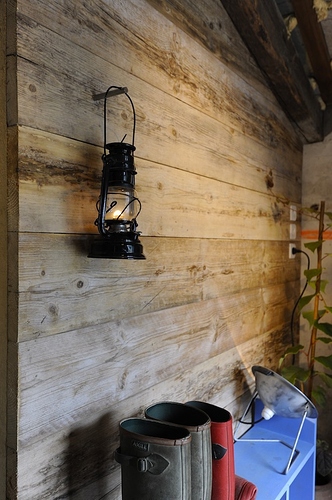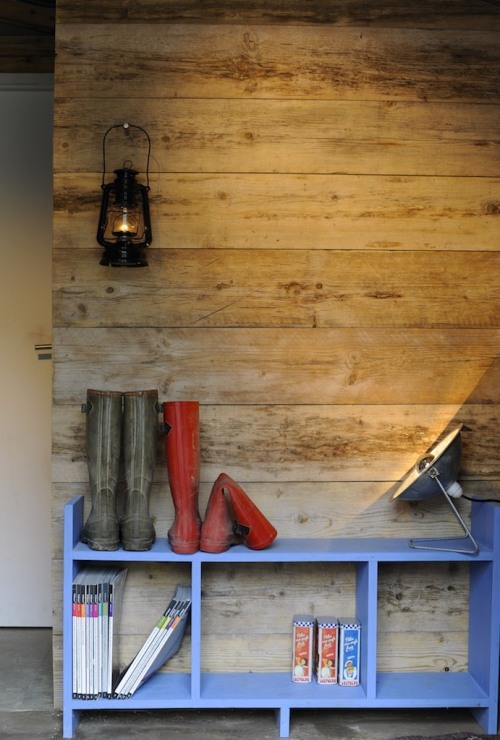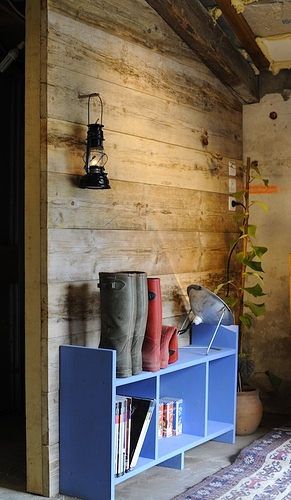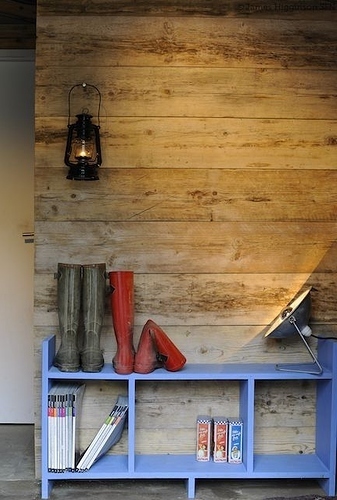
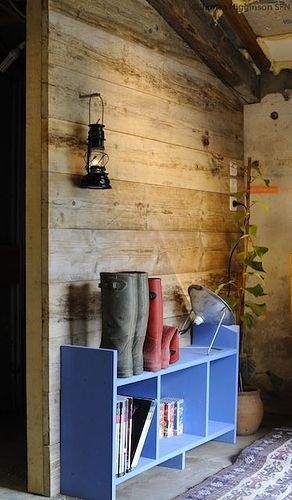
Following on from the success of the pallet table project, I decided to recycle a pile of old scaffolding boards that are no longer sturdy enough to serve their intended purpose.
Click on any of the images for a larger view.
As you can see from the ends of these 4 meter long planks they have begun to split down the center and in places are very weak.
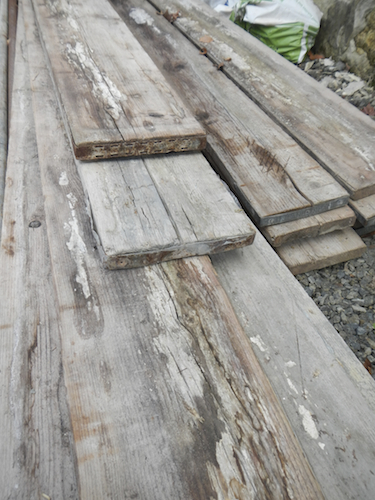
First step was to build a standard timber stud partition, I’ve got good fixings in to the wall, ceiling and floor around every 50cm/18" or so. I included a larger joist as an upright on the left hand side as this will support a door later.
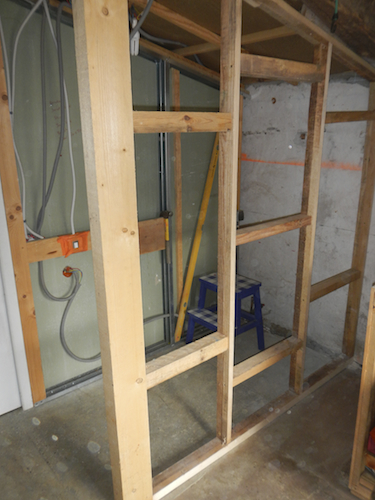
I've made some fairly rough measurements at this point so that I can cut the good sections from the damaged boards and handle them more easily.
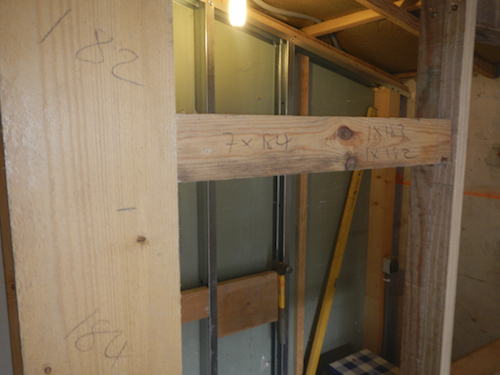
I then cut to length the best sections of the boards trying to avoid any that had spilt.
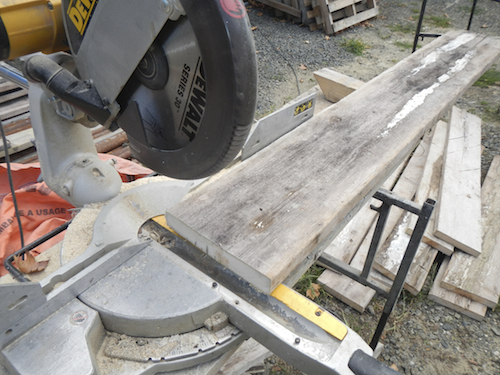
Then, using the table saw I removed 5mm or less than 1/4 of an inch from either side leaving me with a nice straight edge, you could do this with an electric plane too if you don't have a table saw.
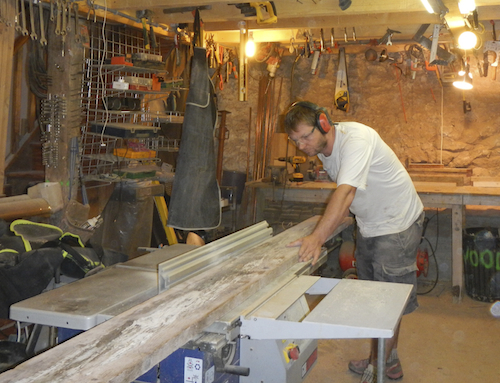
Everything now gets sanded on both sides, I could have just done the exposed surface but I wanted to remove any residue from the timber so that it will be easier to treat later.
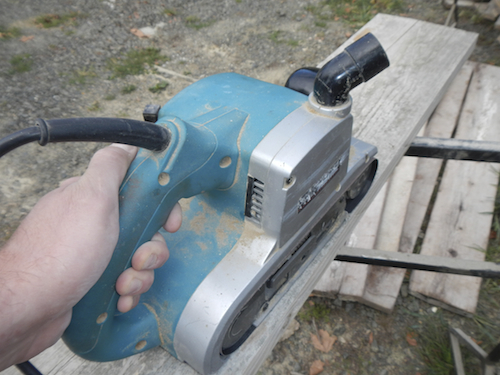
All the planks are now prepared, they are slightly oversized and I can now easily cut them exactly to my requirements.
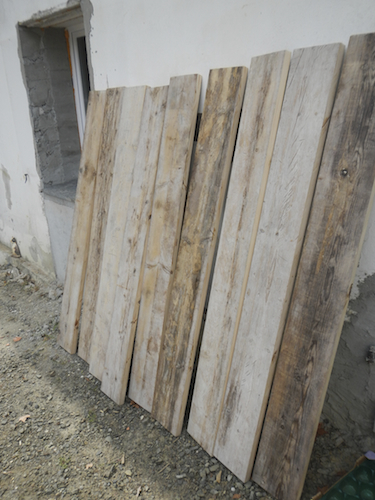
Starting at the base of the wall I've put in a couple of screws to hold the first board in place making sure it's perfectly level.
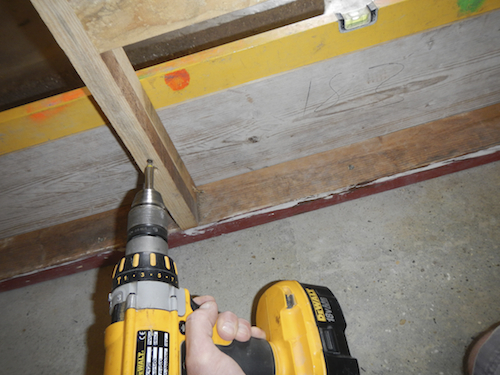
Now it's a simple case of continuing to the top, still only using a couple of screws for each board at this point. The boards at the top of the wall require extra trimming which I did on the table saw, a jigsaw would be fine for this too.
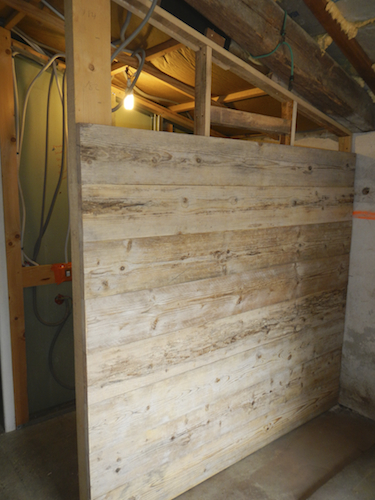
All the boards are now securely fixed in place with 8 (6.0x100mm) screws each. Notice I've attached them from the back of the wall so as to not have any visible fixings on the front.
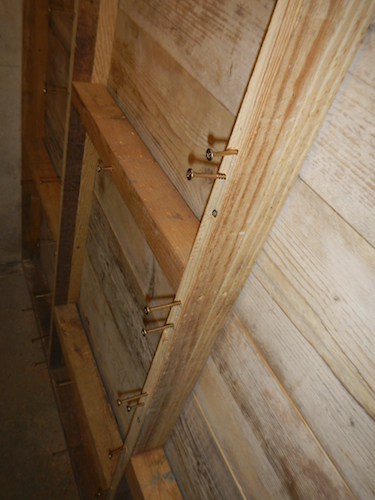
Everything is now firmly fixed in place and is ready for a soaking with anti-termite treatment (which will penetrate better due to the sanding on both sides), I quickly applied this using a garden sprayer, after an hour it got a second coat.
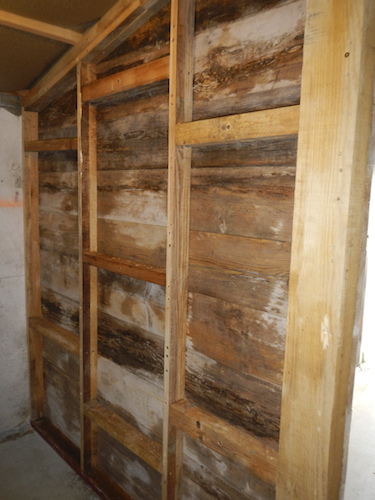
That's it for now, I'll let the wall dry out a little before I decide whether or not to apply any surface finish as the boards will shrink slightly having previously been stored outside. If you have any timber that you want to work with and you're not sure of it's humidity content, bring it inside and store it for a few weeks before you use it.
The finished wall, which I think you'll agree makes a lovely warm and unique feature?
